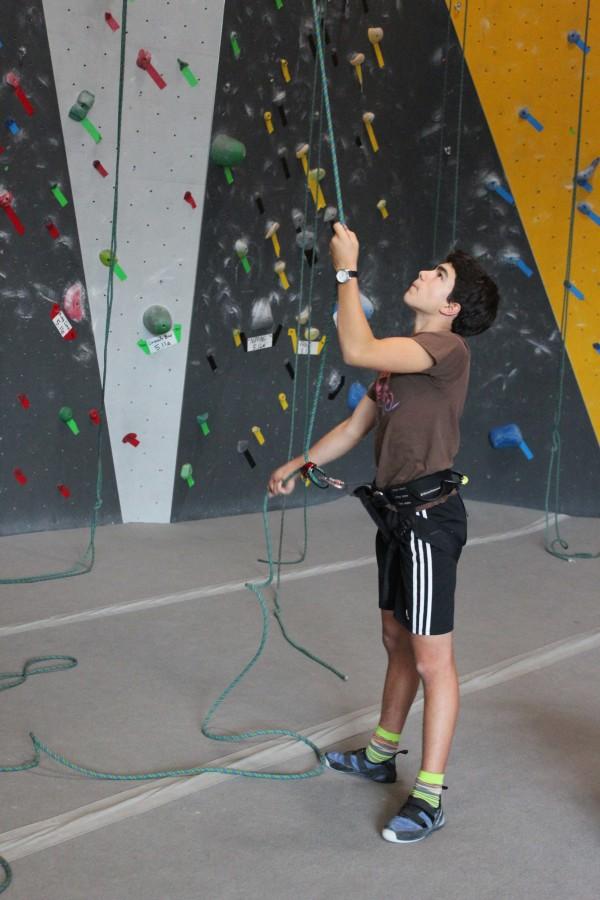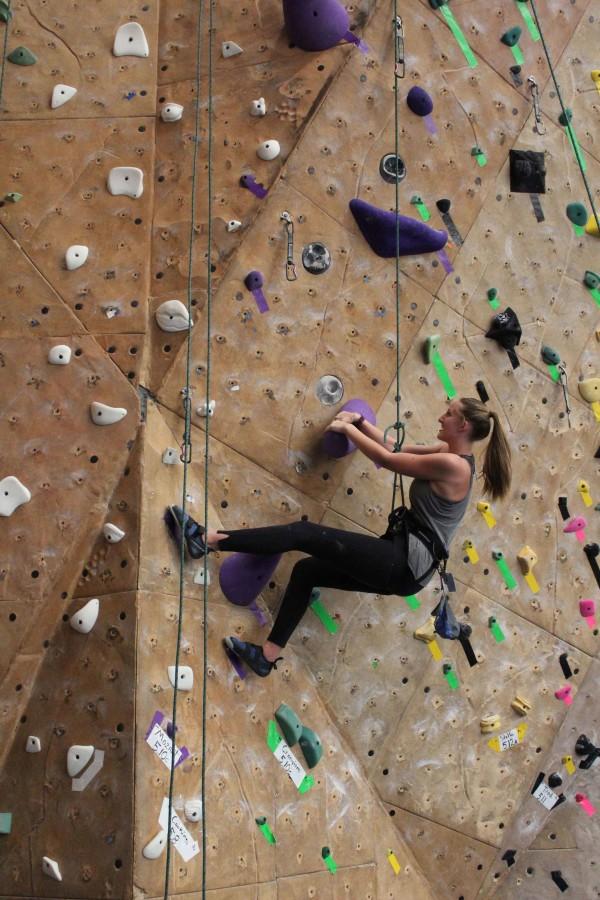Urban’s PA classes offer more than just physical activity
Diego Lopez (’18) belays fellow classmates
Athletes know the sights, sounds, and smells of their sports. The swoosh of the ball against the net after it flies between the goalie and the post, the buzzer screeching as the first quarter ends, the squeak of basketball shoes on the court, the hollow bounce of the tennis ball against the court. For some these sounds are beloved, well known sensations of activities they enjoy on a daily basis.
In the state of California, secondary school students are required to have at least 400 minutes of physical education time, in the form of sports or through classes, every 10 days. For those that don’t consider themselves traditional athletes – swimmers, basketball, baseball, or soccer players, Urban offers Physical Activity classes to meet these requirements, and Urban’s requirement of 20 hours of physical education credit for eight terms.
“It’s really important for kids to get some type of physical activity, and if you aren’t playing some type of sport, or you don’t already have a passion for some type of physical activity, it’s a great way to get [students] to try different things, said Kali Heys, assistant athletic director.
According to Joe Skiffer, athletic director, Urban’s physical activity classes are “something that that the kids will want to do, where they’ll be challenged but also have fun. Something that will be accessible to them once they leave Urban, so general activities that they can do moving forward.”
Joining a specific physical activity class may be intimidating for some however, based either on the sheer volume or concerns about one’s skill level. Skiffer, however, has advice for students who are on the fence about trying a new activity: “Try it. You never know until you try. If you try and you don’t like it, you move in a different direction, you can mark it off your list, and if you ended up liking it, it worked out perfectly.”
Currently, Urban offers eight physical activity classes, with standard contenders which are offered every term, such as Strength and Conditioning, Yoga, Rock Climbing, and Fencing, as well as new additions, such as a freshman and sophomore only version of Strength and Conditioning, a Hybrid Training that involves mixed martial arts, Introduction to Dance, and Taiko Drumming. The program is constantly changing, with new, potential classes being thought up by students and faculty alike. The most likely addition for the future will be a Pilates class, mentioned in interviews by both Skiffer and Heys.
“I don’t know about a clear path (for the future). I would definitely love to see the classes that we offer vary and go in a direction of kids’ interests,” said Heys.
For Skiffer, a goal for the department would be to, for “80 percent of the kids who are not playing a team sport … offer a physical activity that they’re attracted to and want to do.”
“I think that will be difficult but the more [classes] we offer the more likely that is,” concluded Skiffer. “Every term I’m looking to add something.”
The benefits of this program have been noted by team-sport athletes and out of school athletes alike.
“I think it can socially be great if you are with a group of people that you can connect to, and go through something physically demanding and make it through together,” said out of school equestrian Lena Galinson (‘16) on the concept of Physical Activity classes. “PA classes for me offer a break from work during the day,” continued Galinson, who finds it hard for herself to transition immediately from school to homework. Galinson has participated in Strength and Conditioning since her freshman year, and has valued her time keeping active.
“If I were to participate in a PA class I think strength and conditioning would be my first intuition,” said varsity soccer player Sam Denton (‘16), whose athletic schedule of lacrosse and soccer limit his time for physical activity classes.
“I think the program mainly benefits students at Urban who want to stay active but do not like any sports offered or are seeking a less competitive environment,” continued Denton.
Because the program is in constant flux, students can easily recommend a PA class. Skiffer advises those who think they have the next greatest activity to send him or Kali Heys an email or stop by their offices with a proposal. If they can find a teacher, an appropriate space, and enough students who are interested in pursuing it, who knows, it might be the next big thing.



